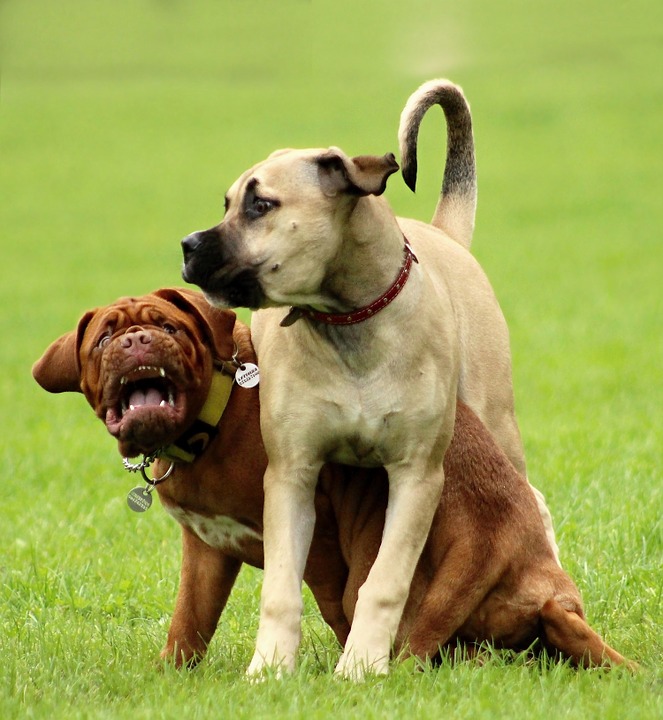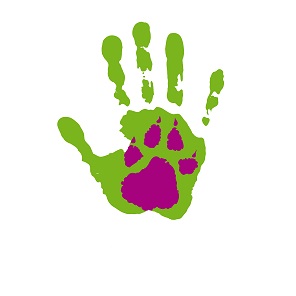Self-control and Impulse Control in Adolescent Dogs

One of the most frustrating times to be a dog owner is when your puppy is between the ages of seven and nine months. While this article will help anyone whose dogs have a low self-control level, it is aimed at the 9-12 month old adolescent dog.
- At 5-6 months your puppy ‘chemicals’ that make him cute and cuddly, obedient and passive, wear off.
- At 6 months your puppy starts a major ‘flight/fear’ stage.
- At 7-9 months your puppy starts the sexual development stage
- At 7-12 months your puppy becomes more independent and mentally mature
Each of these creates its own behavior problems. None of the obedience exercises for puppies works anymore. Our once obedient, happy puppy is now lunging on the leash, barking at people and other dogs, and dragging us when we try to take a walk.
Self-Control and Canine Obedience
Many of the dogs who drag their owners down the street do not have self-control. “I want it – I will fight until I get it.’ They have learned that if they try harder, pull harder, or bully then they will get what they want. You can fix this.
Before you understand how to teach self-control you need to learn what it is
Opposition Reflex in Dogs
The dog’s opposition reflex is an instinctive reaction to push against a push. It is strong in guard and herding dogs. It is what makes them keep working when other dogs would stop working. It is what makes a lab go through dirty, cold water until it finds a duck, and then bring it back.
Dogs have a natural resistance to pressure we call this The Opposition Reflex. If dogs are pulled in one direction, they will automatically pull in the other direction. The opposition reflex is your dog’s natural instinct to resist pressure. And it is a survival instinct. If something is hunting the dog, and trying to pull it down, the dog will pull harder in the other direction to get away.
Lack of Boundaries and Inhibition
Puppies are taught inhibition at 6 weeks. They learn control and manners at this age. When we bring a puppy home we often let the puppy run loose to practice survival instincts. We think we are being good to our puppy by letting it play and have full run of the house. What we are actually doing is teaching the puppy to hunt, fight, run – and get its own way.
All we do is play with a puppy and pet it. We take it for a walk. That is less than 1 hour of interaction in 24 hours. The rest of the time the puppy is running wild. Unfortunately, the do not see the association between ‘obedient’ time and ‘wild’ time just because you put a collar on.
Emotions & Chemical Reaction and Dog Behavior
We call dogs who lung, pull, bark, and act crazy on a walk reactive. This is because they are ‘reacting’ to a stimulus that they find stressful, or frightening. You cannot train a dog not to fear. Fear is an emotion. Your dog is not being disobedient. It is not being bad. It is afraid.
You need to change the emotion. Once you change the emotion then you will change the chemicals released in your dog when that stimulus appears. Once the emotions and chemicals change then your dog’s reaction will change.
Why Trainers Us Food
When a dog eats it releases a chemical called Dopamine into its system. This makes it happier. When it is happy then it is not feeling afraid. We use food to increase the dopamine and change the emotional reaction.
How to Stop Lunging and Pulling
There are many successful therapies and training methods to stop lunging and pulling. But, before they work you need to teach your dog self-control. It needs to learn that it doesn’t always get what it wants. This is different from learning the ‘leave it’ command.
You cannot force a dog to have self-control. You cannot train a dog to have self-control. You cannot train a dog to stop being afraid. So what do you do?
The best treatment is to join a reactive dog class, or learn how to handle a dog properly. The other alternative is to ‘stop.’ If you are walking and your dog acts up then stop walking. Keep the leash short. Do not correct. Avoid what the dog is afraid of and wait until it behaves. Then, when your dog is quiet, start walking again.
It may take several days to be able to walk past your driveway. Don’t give up. Each time you go out your dog is learning self-control. When your dog has enough self-control then it will be able to focus on you.
You also need to do this in your home. Here is a list of things you must stop doing:
- Ignore your dog if it is barking at you
- If you are holding a treat and your dog is chewing at your hand then stand still. Do not give your dog the treat until it sits quietly and looks at you for 2-3 seconds.
- Never give your dog a treat unless it has done what you want it to do. Make your dog wait for 5 seconds before it gets the treat.
- Always give your dog a command. Then wait for the behavior. Then get the treat. Never have the treat in your hand while you are asking for the behavior.
- You may even make your dog work for its breakfast and supper.
- Play with your dog at least 30 minutes a day
These techniques are a start. If you have been doing these, and your dog is not improving, then read our article on Frustration Tolerance.
Download Primers:
Does Behavior Modification Work
One Comment on “Self-control and Impulse Control in Adolescent Dogs”
Leave a Reply
You must be logged in to post a comment.

Impulse Control and Frustration Tolerance in Adolescent Dogs
May 3, 2017 at 6:01 pm[…] Any exercise where your dog wants something, but doesn’t get it, can help build frustration tolerance. If you want more information on self control and impulse control then read pt 1 of this series: Click […]